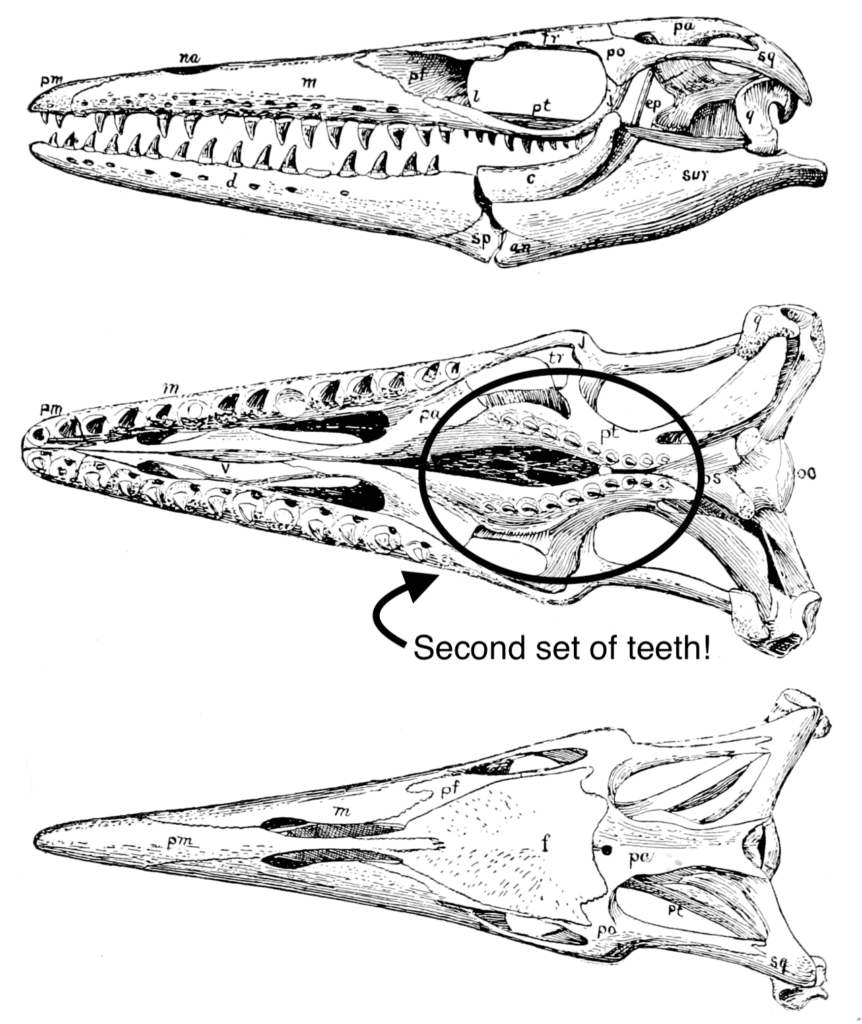Let’s go on a trip! We’ll have to travel about 1,000 miles and roughly 66 million years to arrive on the rocky beach of the Western Interior Sea of Kansas. There is lush plant life with ancient birds and bugs buzzing around the water – we might feel as though we’ve been transported to the land of Oz! Better stop Toto before he leaps in for a swim though, it’s full of dangerous creatures!
One of the creatures in these waters were the Mosasaurs. These animals evolved from the same ancestor as today’s monitor lizards like Komodo Dragons and Water Monitors. Feeling the predation pressure from larger dinosaurs, this little lizard adapted to life in the water and soon became fully suited for life in the oceans as they developed the ability to give birth to live young, eliminating the need to lay eggs on land.
The mightiest of all the mosasaurs was Tylosaurus. They grew more than 45 feet long, making them the largest. Mosasaurs had a long and muscular tail that was vertically flattened, like a shark, that powered Tylosaurus through the water. This allowed them to ambush its prey with rapid bursts of acceleration. Paddle-like limbs helped steer their slim body, covered in lizard-like scales, through the water. (Image 1- illustration of blue Tylosaurus)

Tylosaurus was the deadliest hunter of the ancient seas, ready to seize and kill just about any smaller creature that crossed its path using jaws that were lined on each side with two rows of pointy, cone-shaped teeth. This reptile used its snout to locate prey, which, once inside the mosasaur’s jaws, was swallowed whole. When the sea monster opened wide for the final gulp, two extra rows of teeth on the roof of its mouth started digestion by shredding the prey as it was being swallowed.
Though not a dinosaur, Tylosaurus lived alongside them and went extinct around the same time. Many Tylosaurus remains have been found near the Great Plains in Nebraska and Kansas, which was once covered by a large ocean we went to visit. Don’t be fooled, we couldn’t swim in this ocean like we can in today’s waters
Written by: Abbey Hines, Museum Educator
